Mastering the art of the homegrown salad bowl: From optimal picking times to dressing it up
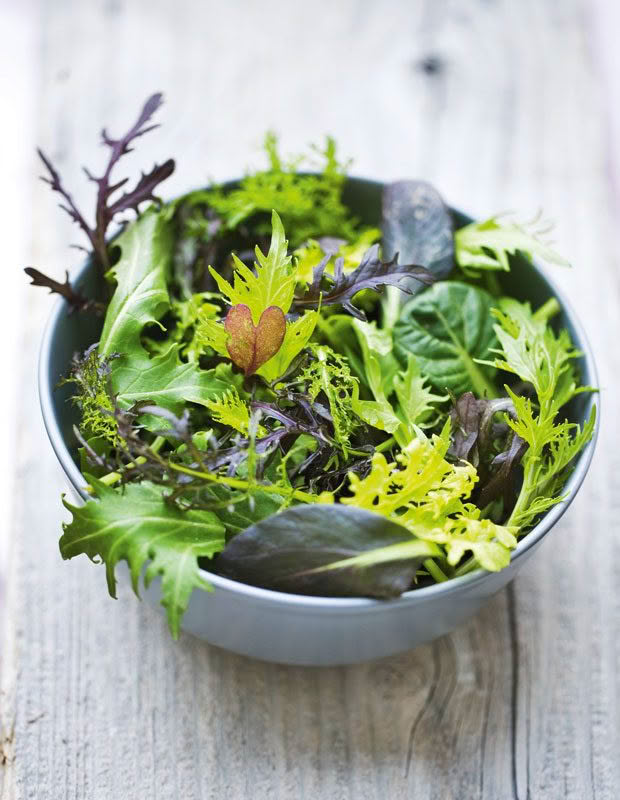
A salad is the celebration of home-grown, leafy vegetables but there’s an art to mixing the perfect salad.
Words & Photos: Jenny Somervell
The palette of flavours, textures and leaf shapes now available for home-grown gourmet salads is mouth-watering. Crisp or butter-soft, red, purple, magenta, lime-gold or green, frilly-lacy or smooth, fine or coarse, tall, flat, heading or open. But how do you put them together?
My husband-chef told me – even before I asked – that he wasn’t coming up with any salad recipes for this story. That’s because we simply take a bowl and a pair of scissors into the garden and pick what we feel like out of what is available.
We do look for a variety of colours and textures, contrasting dark green, red and lime-yellow leaves with smooth, buttery, crisp and frilly leaf shapes. Even without any add-ons, a mixed lettuce salad can be interesting and attractive.
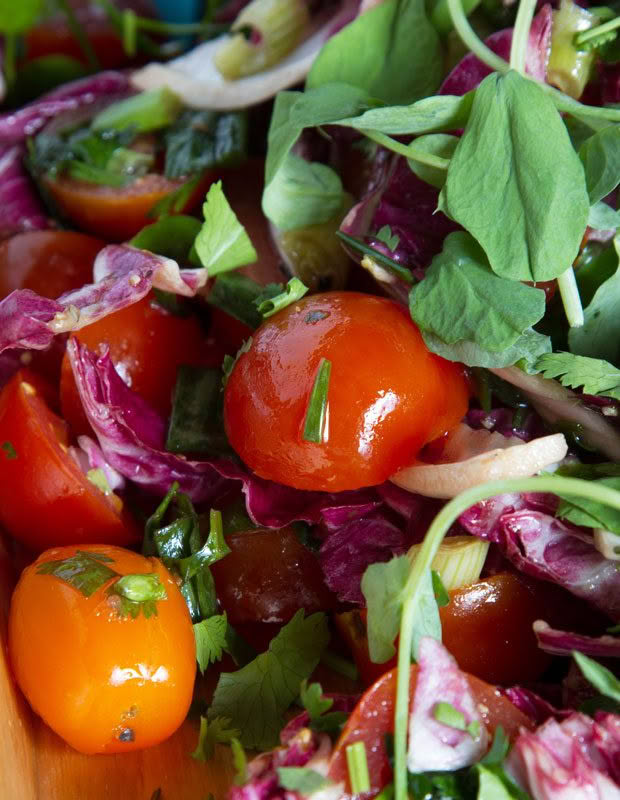
Lettuces are usually the base, and they are neutral or mild in flavour. Depending on availability, we supplement or replace other mild greens for lettuce, including corn salad, mibuna, or small pak choi thinnings.
Leaves added for crunch include cos lettuces (the crunchiest), followed by crisp head-types (looseleaf and buttercrunch types are softer). Winter purslane has a firm, juicy texture.
The key is to balance flavour, colour and texture. We like a salad with a touch of ‘bite’ so we add rocket, young mustards, nasturtiums, cress or mizuna, in season. But take it carefully. Too much rocket or mustard, and the pleasant mild crunch of lettuce is overwhelmed.
Trial and error works best. I often munch combinations as I am picking them to test flavour, especially if I suspect they may be a touch too bitter.
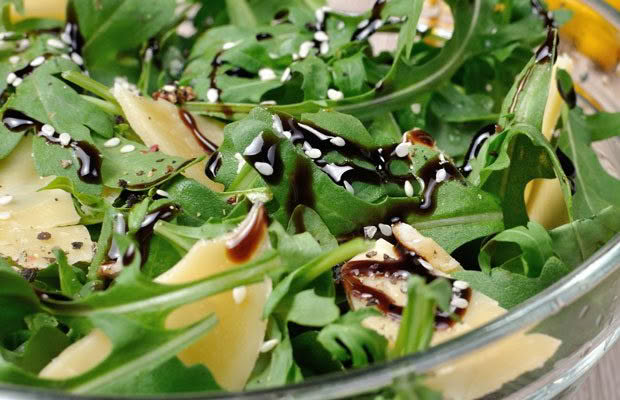
Bitterness develops as greens (mustards and rocket especially) head towards flowering, or temperature extremes. Even then, we get away with adding a few older leaves among more tender greens, partnered with a more punchy dressing.
Lettuce leaves are beautiful in their own right, and help you save on washing up. The larger leaves of Canasta, Lollo Rosso, and Marvel of Four Seasons make lovely containers for salads or appetisers.
They are also great for making Korean-style wraps with fillings such as slow-cooked pork or steak, rice, herbs, spring onions, and chilli sauce or paste.
DRESSING IT UP
Once you have a balance of textures and colours, the final touch is a dressing. Lettuces are mild in flavour and can be given character with the addition of herbs and more intense flavours in a well-chosen dressing.
In winter we enhance our more dominant-flavoured salads with a locally-made lime and chilli dressing. On its own it transforms our salads.
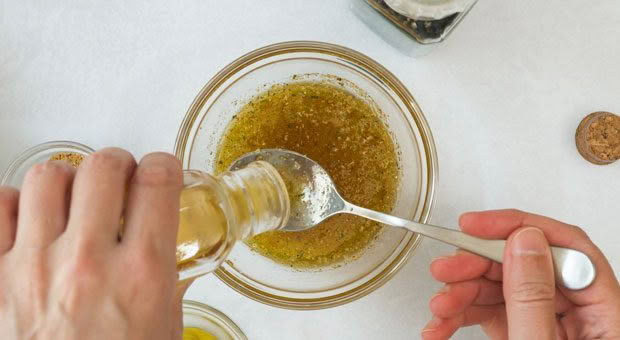
However, the first spring lettuces are delicate in flavour and easily overwhelmed with other flavours. A mild-flavoured vinaigrette works best, subtly flavoured with herbs such as parsley, tarragon, chervil and chives and a few spring flowers.
When herbs are unavailable, herb-flavoured vinegars can be used in the dressing instead. These are so easy to make.
All you need is a bunch of fresh herbs, white-wine or cider vinegar and a sterilised jar. The vinegar will extract the fragrant oils from the herbs without you doing anything at all.
THE KEY TO A GOOD-TASTING SALAD: HARVEST TIME
Harvest leafy ingredients first thing in the morning or in the cool of evening if possible. A bonus of loose-leaf varieties is that you can harvest leaf by leaf. We pick the older (outside) leaves first, which also contain more calcium.
Heading types should be harvested when they are firm but not hard. After that they start to lose flavour and quality. If you intend to store lettuces, they are better harvested early in the day while still dry and cool.
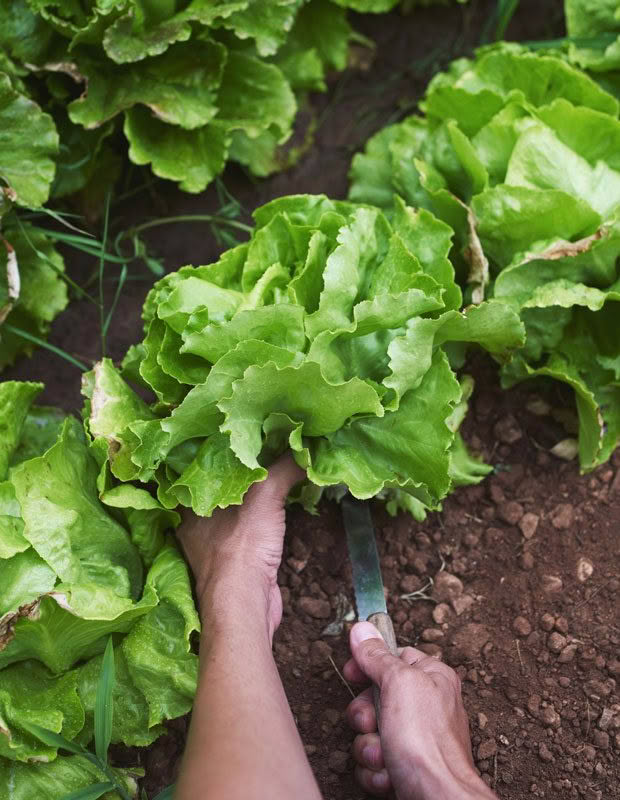
The firmer the lettuce, the longer it will keep. In theory, Iceberg will keep up to two weeks and Romaine for about 10 days, but butterhead and loose-leaf types keep only a few days.
Our preference is to keep them minimally or not at all, other than to ‘crisp them up’ before serving. It’s easy too, with garden-fresh leaves just a few steps away.
WHAT TO EAT WHEN GREENS ARE LEAN
In late winter/early spring, greens can be lean. We frequently supplement our spring salads with chickweed. The young growth is mild-flavoured, grows abundantly in any cool weather, and has the added bonus of being a spring tonic herb. Avoid older leaves and flowering shoots.

THE NOT-GREEN SALAD
Inevitably, even with the best-laid plans, you will still strike a glitch in supply, but a little imagination and lateral thinking will soon solve the problem.
Last winter, trouble with my lettuce-sowing resulted in a greens famine on a night we had guests for dinner. But just five minutes wandering around the garden was enough to time to find something edible: chickweed, sorrel, parsley and miner’s lettuce, with a few viola for colour.
There’s no need to stop at leaves either. Flowers, fruits, berries and nuts turned an ordinary salad into a gourmet experience. Our guests had no clue. “What a great salad!”
The lost art of salad-making
THE BALANCED SALAD
Lettuce can be the sole ingredient with just a few (no more than three) complementary herbs. Or lettuce can be the major ingredient in a mixed salad, providing a mild foil for more robust flavours balancing tart, bitter, peppery, and sweet.

Either way, balance is key. Each ingredient should be distinct yet not dominate. Contrast colours and play around with textures.
ADD CHARACTER WITH HERBS
Lettuce pairs especially well with fresh herbs. The possibilities are endless, but our favourites include:
– lemon balm or lemon thyme for a hint of lemon;
– chervil, tarragon or dill for a hint of anise;
– chives or spring onions for a mild, onion flavour.
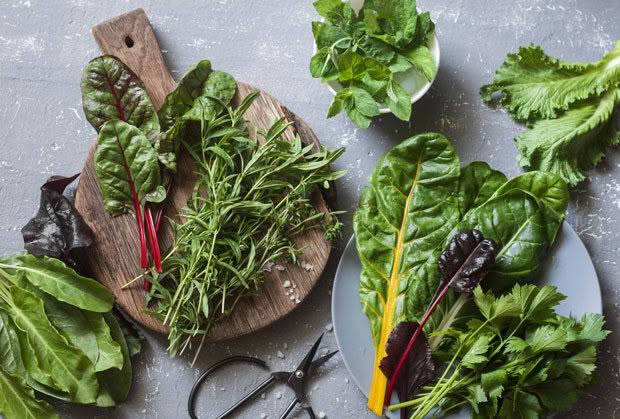
Use milder herbs generously – a small handful will serve four people. Herbs can be snipped into pieces or chopped finely to add to the dressing or salad. Edible flowers in salads add delightful colour bursts and never fail to draw comment (more about these next month).
LETTUCE HARVEST & PREP
Wash leaves thoroughly in cool running water, removing all soil between the layers, but do not soak as it tends to soften the leaves.
Dry well using a salad spinner or pat dry with paper towels. Leaves should be dry in the salad bowl – soppy salads are not nice – and handle leaves gently and only tear or cut (with a sharp knife) for the salad bowl at the last moment.
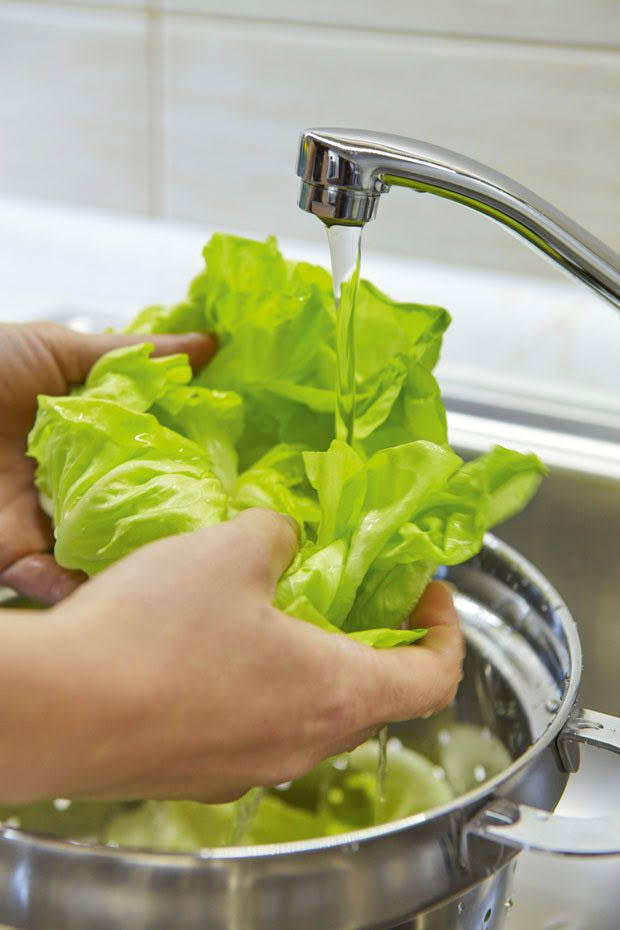
Getting dressed
Dressings greatly enhance salads. Basically, a dressing combines a smooth enriching substance (such as oil) with an acidic liquid for a fresh, clean taste, seasoned with herbs, pepper and salt and mustard.
There are two types:
– the vinaigrette or French dressing, unstable emulsions which are whisked or shaken just before pouring;
– the dollop dressing, thicker and more stable, including mayonnaise, cream or yoghurt.
A GOOD OIL
A good oil is essential. If using olive oil, choose a fresh, extra virgin olive oil, with a ‘pressed-on’ date well within a year of use.
Extra virgin means made from the first cold press of the olives and it should be full and fruity in flavour.
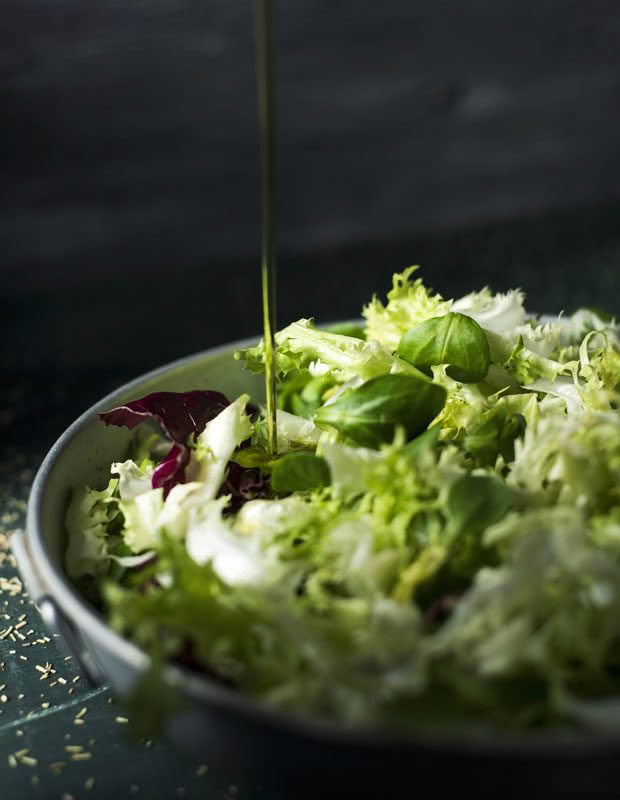
Only dark bottles should be used, as olive oil deteriorates on exposure to light. Supermarket oils are often blends and don’t always meet these requirements.
A GOOD VINEGAR
Wine vinegars such as white wine vinegar and champagne vinegar are popular for vinaigrettes with their delicate-flavour and pale colour. Good quality cider vinegar is also suitable. Balsamic vinegar with its rich, chocolate-brown colour and sweet, fruity flavour, suits more dominant flavours such as rocket and Asian greens.
15 INGREDIENTS TO ADD INTEREST TO A SALAD
• sautéed sliced almonds or pinenuts
• dry-roasted cashews, almonds, peanuts etc
• dry-roasted sunflower seeds or toasted sesame seeds
• walnut pieces
• fresh fruit, eg pineapple, strawberries, chilean guavas, orange segments
• dried fruits
• heirloom tomatoes, eg cherry, currant, striped, red, purple and yellow varieties
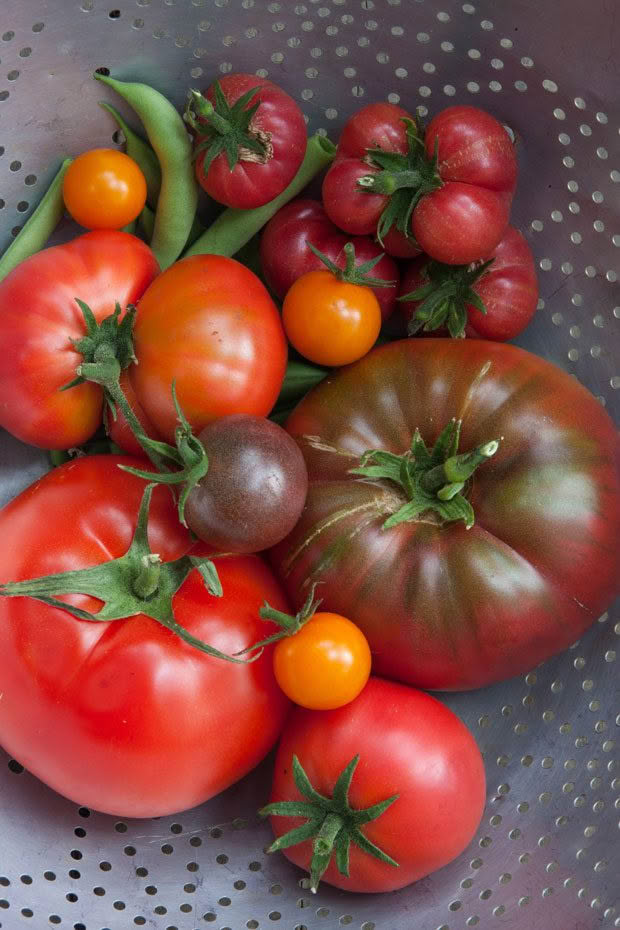
• julienned vegetables
• olives
• mushrooms, thinly sliced
• sprouts
• snow peas
• microgreens
• herbs, finely chopped
• edible flowers such as rose, violaand/or calendula petals add delightful colour bursts
5 key dressings
1. THE CLASSIC VINAIGRETTE
INGREDIENTS
1 tsp sea salt
¼ garlic clove
50ml red or white wine vinegar
freshly ground black pepper
pinch of castor sugar
150ml extra-virgin olive oil
Crush garlic with salt using the flat side of the knife. Scoop into a bowl or jar, add vinegar, pepper and sugar. Whisk or shake to dissolve. If whisking gradually, add the olive oil to emulsify.
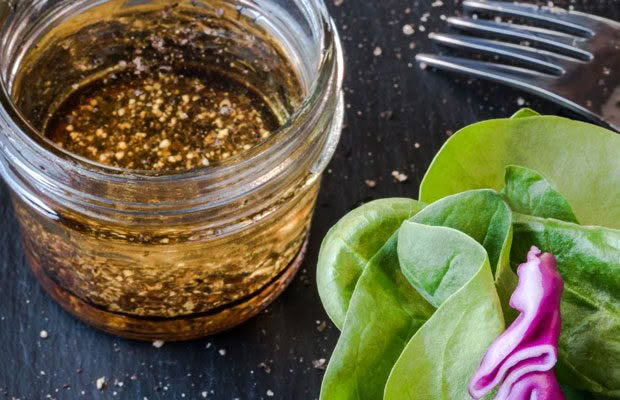
If using a jar, add all the oil and shake hard. Stand a few minutes before serving. To make smaller quantities, use one part vinegar to three parts oil. Will keep a few days in the fridge.
2. BALSAMIC DRESSING
Whisk one part balsamic vinegar, a generous pinch of salt, freshly ground pepper, and a little mustard and honey. Whisk again with 3 parts olive oil. Good with stronger flavours.
3. LEMON DRESSING
Whisk one part freshly-squeezed lemon juice and one part white wine vinegar with a generous pinch of salt and sugar. For more zing, add the finely grated zest of the lemon and whisk again with 3 parts olive oil.
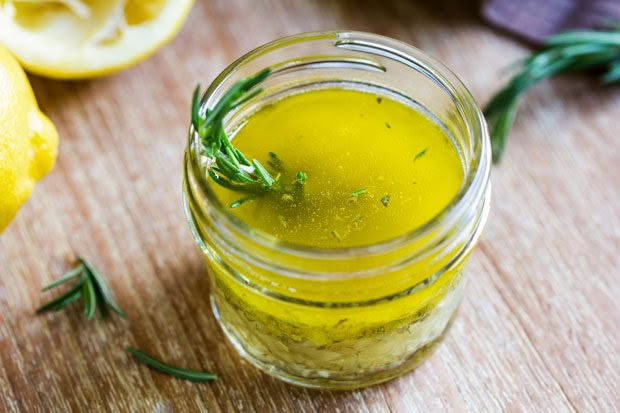
4. SUMMER DRESSING
Whisk equal parts freshly-squeezed orange juice and extra-virgin olive oil, then thicken to taste by whisking with white miso paste.
5. JAPANESE STYLE DRESSING
Whisk one part light soy sauce, one part rice wine vinegar, 2 parts mirin and 3 parts sunflower oil.
Add finely-grated ginger, chopped spring onion and a few drops of sesame oil to taste. Great with Chinese veges, sprouted seeds or cabbage.
MORE HERE
10 delicious ways to dress your salads: Basic vinaigrette variations
Love this story? Subscribe now!
 This article first appeared in NZ Lifestyle Block Magazine.
This article first appeared in NZ Lifestyle Block Magazine.
